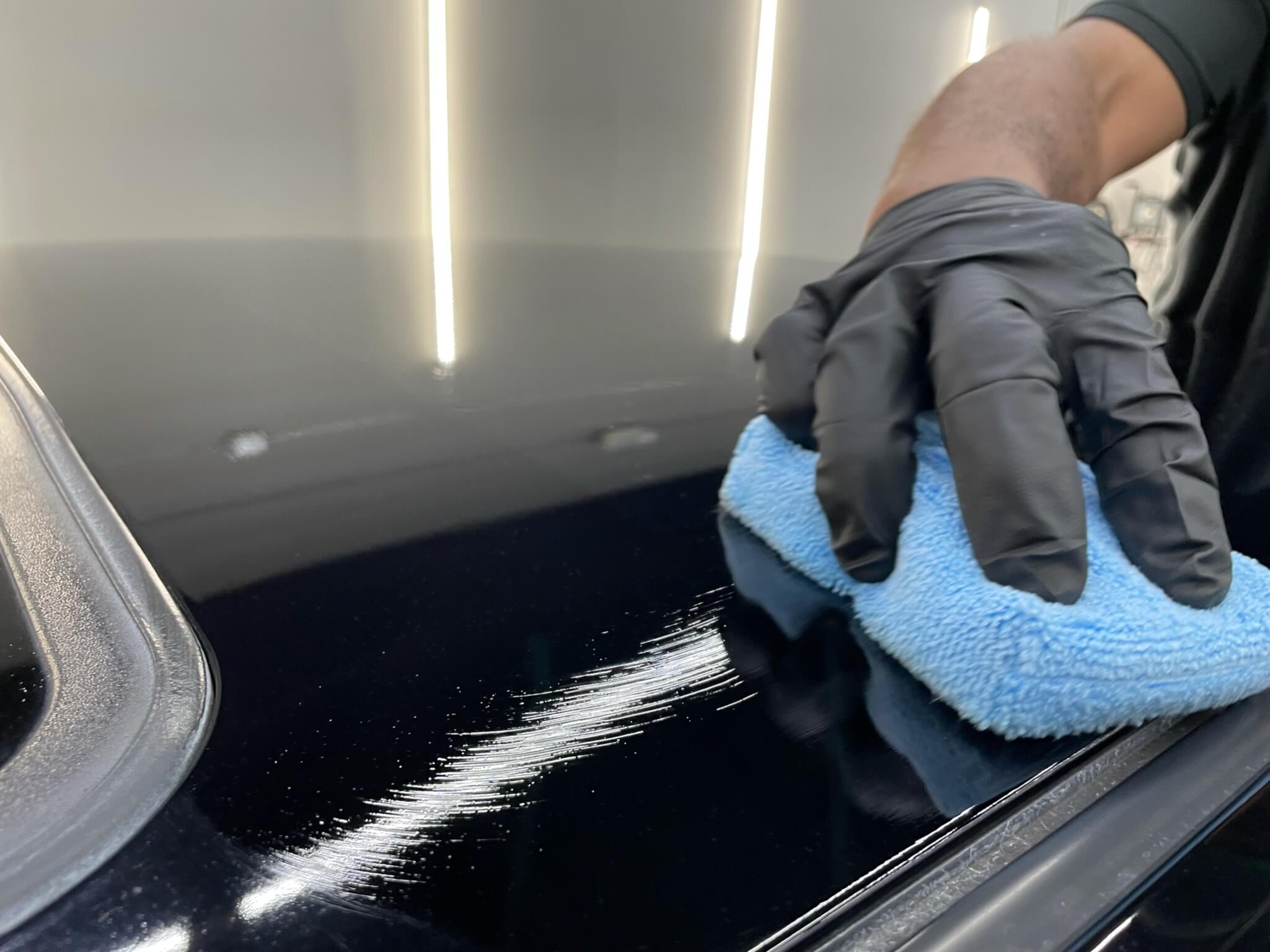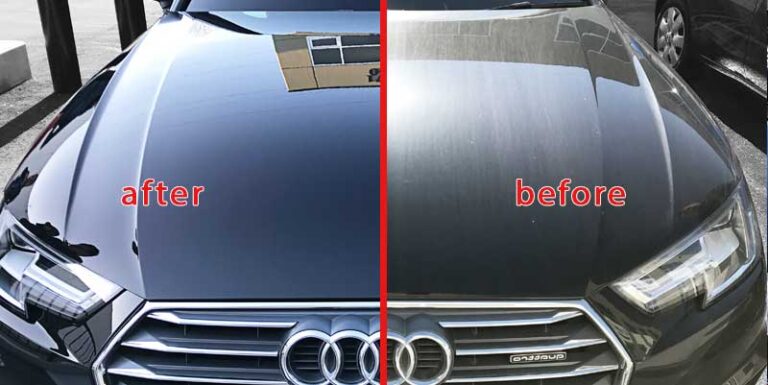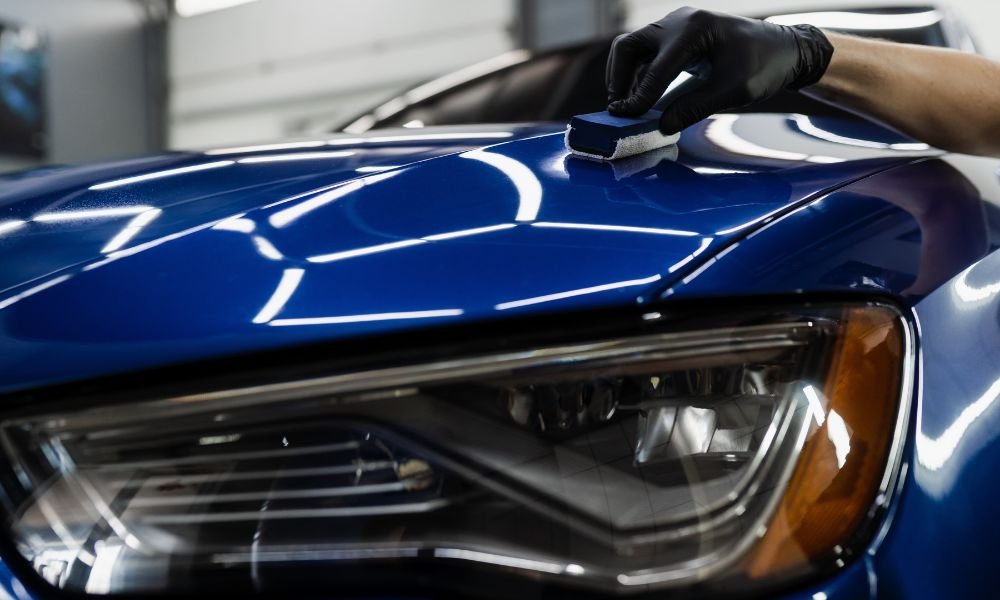Frequently Asked Questions About Ceramic Coating Philadelphia Provider Answered
Frequently Asked Questions About Ceramic Coating Philadelphia Provider Answered
Blog Article
Why Ceramic Finish Is the Ultimate Option for a Flawless Finish
Ceramic finishing has actually arised as a leading service for those looking for a perfect coating for their vehicles, many thanks to its amazing longevity and safety attributes. What elements truly established ceramic finishing apart?
What Is Ceramic Layer?

When used correctly, ceramic finishing develops a hydrophobic surface area that fends off water and dust, making it easier to clean up and preserve. Unlike traditional waxes or sealants, which typically provide temporary security, ceramic finishes can last for several years, relying on the product high quality and application method. The process of applying ceramic finish calls for meticulous preparation, including detailed cleansing and sometimes repaint modification, to make sure optimal bonding and performance.
Ceramic coatings are not limited to vehicle surface areas; they can additionally be utilized on different products, including glass, steel, and plastics, providing a versatile solution for boosting security. Generally, ceramic finish stands for a significant advancement in surface security modern technology, combining both aesthetic and practical benefits for a variety of applications.
Advantages of Ceramic Finishing
While many surface security alternatives exist, the advantages of ceramic layer stand apart due to its one-of-a-kind residential or commercial properties and durable efficiency. One of the primary advantages is its exceptional sturdiness. Ceramic Coating Philadelphia. Unlike typical wax or sealants that call for frequent reapplication, ceramic finishings offer a resistant layer that can last for several years, dramatically minimizing maintenance initiatives
One more significant benefit is boosted security versus ecological impurities. Ceramic coverings develop a hydrophobic surface area that pushes back water, dirt, and numerous pollutants, making it easier to clean up. This feature not only protects the vehicle's look however additionally minimizes the danger of deterioration and oxidation, specifically in harsh weather condition problems.
Furthermore, ceramic coatings supply superior resistance to UV rays, stopping fading and deterioration of paint gradually. This UV protection is critical for keeping the visual value of lorries and surface areas exposed to guide sunshine.
Additionally, the glossy surface attained with ceramic finish improves the total aesthetic appeal, providing surfaces a showroom-quality shine. In general, ceramic layers stand for a considerable advancement in surface defense modern technology, offering long-lasting benefits that satisfy both practical and visual needs.
How It Works
Understanding the scientific research behind ceramic coverings reveals how they offer such exceptional protection and longevity. At its core, a ceramic coating is a liquid polymer that chemically bonds with the vehicle's manufacturing facility paint. This bonding creates a safety layer that is both hydrophobic and oleophobic, repelling water, dirt, and oil. The primary part of many ceramic finishes is silicon dioxide (SiO2), which is originated from quartz. This substance adds to the coating's solidity and resistance to scrapes, UV rays, and environmental impurities.
The application process visit our website involves numerous actions, including surface preparation, which is crucial to accomplishing ideal attachment. As soon as applied, the finish goes through a healing procedure, during which it solidifies and develops a semi-permanent bond with the continue reading this paint surface area. This bond is what differentiates ceramic finishes from conventional waxes and sealers, offering a longer-lasting safety barrier that can withstand for many years.
In addition, the thickness of the layer can improve its safety qualities, making sure that it can endure extreme conditions. Ultimately, the scientific research of ceramic coatings integrates innovative products with innovative application techniques to supply an unmatched level of protection and aesthetic enhancement for cars.
Comparison With Traditional Approaches
The advantages of ceramic coverings come to be especially noticeable when compared to conventional paint security techniques such as waxes and sealers. While waxes supply a short-term shine, commonly lasting a few weeks to a couple of months, ceramic finishings supply a lasting protective layer that can endure for several years. This longevity substantially reduces the frequency of reapplication, making ceramic coatings a much more cost-efficient solution with time.
Additionally, standard approaches commonly require substantial prep work and numerous applications to attain a satisfying level of defense. In comparison, ceramic finishings bond at a molecular level with the vehicle's surface area, producing a robust shield against ecological contaminants like UV rays, acid rainfall, and road salts. This bond boosts the automobile's resistance to scrapes and swirl marks, which prevail with standard waxes and sealants.
In addition, the hydrophobic residential properties of ceramic finishings ward off water and dust, resulting in simpler this article cleaning and upkeep. In comparison, wax and sealant-treated surfaces can attract crud, necessitating more constant washing - Ceramic Coating Philadelphia. In general, ceramic coatings not only give exceptional defense but also provide a more enduring and aesthetically appealing coating, establishing them as the preferred choice for critical car proprietors
Application and Upkeep Tips

Utilizing a foam applicator, use the finish in small sections, complying with the maker's guidelines regarding density and overlap. Allow enough healing time in between layers, typically 24 hr, to guarantee correct bonding. After application, it is essential to prevent exposure to water or rough components for a minimum of a week to allow the coating to fully cure.
Furthermore, using a ceramic upkeep spray can boost the finishing's hydrophobic properties and durability. Regular assessments for any kind of indicators of wear will assist keep the layer's honesty and maintain that beautiful finish.
Conclusion
In final thought, ceramic finishing emerges as a superior option for accomplishing a flawless auto finish. By creating a durable bond with manufacturing facility paint, ceramic layer efficiently guards against scrapes, UV rays, and environmental contaminants.

Report this page